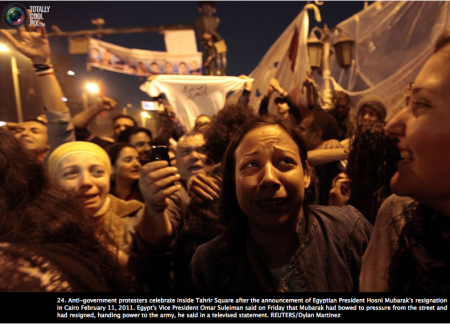A first draft of why it happened must begin in a rural town in Tunisia on the shores of the Mediterranean where Mohamed Bouazizi was the unlikeliest catalyst of the extraordinary realignment in the region.
— Sharrock et al. 2010: Egypt: how the people span the wheel of their country’s history
David Sharrock, Jack Shenker and Paul Harris just posted an excellent, big picture, article in The Guardian about the events leading up to the resignation of Hosni Mubarak.
The article starts with the corruption that provoked Mohamed Bouazizi’s self-immolation in Tunisia and makes the connection to Khaled Said death at the hands of the Egyptian police. The descriptions of these events are graphic, so be warned. Sharrock et al., go on to describe how the Egyptian protesters were able to use technology to organize in a way that has not been possible before. The article ends with the vacillating moves of the Obama administration as it was buffeted by events in Egypt.
“This time we were determined to do something different – be multi-polar, fast-moving, and too mobile for the amin markazi [central security forces], giving us the chance to walk down hundreds of different roads and show normal passers-by that taking to the streets was actually possible.”
The plan worked better than they could ever have imagined. Throughout the capital and across the country, pockets of protest sprung up and overpowered the thinly stretched riot police, who had no choice but to let the marches continue. Later, when the different strands rallied in city centres – including Cairo’s symbolic Tahrir Square –the police used guns and tear gas to disperse them.
But it was already too late. By destroying the smokescreen of police invincibility, even for only a few hours, the youths had pierced Mubarak’s last line of defence – the fear his subjects felt at the thought of confronting him – and a fatal blow was struck to a 30-year dictatorial regime.
— Sharrock et al. 2010: Egypt: how the people span the wheel of their country’s history
This piece is a bit long, and the vocabulary a bit advanced, for the average middle school student, but it is an excellent summary and first draft of history.
